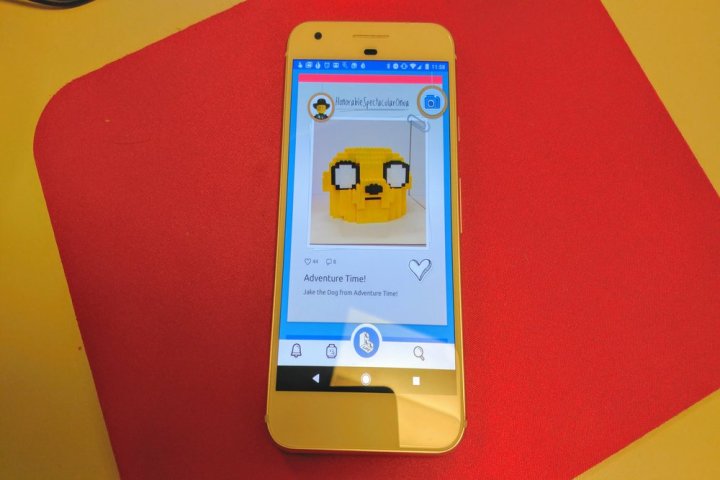
Lego Life, which Lego says has been in conceptualization for the last three years and in development for one, launches Tuesday in the form of a free app for iOS and Android devices. Young users can create Lego avatars with hair and outfits that reflect their personality, and they can share pictures or videos of their creations with a small circle of digital friends. Kids “like” other posts by tapping a heart icon, and a tiered system of rewards encourages them to share. The more Lego Life users post, the more accessories they unlock for their Lego avatar.
Kids can follow their favorite topics and interests in a news feed, where they’ll see highlighted works from Lego’s expert builders. And they can join small groups dedicated to subjects such as vehicles, superheros, animals, and Lego characters like Master Wu from Lego Ninjango, Emma from Lego Friends, and Lego Batman.
Lego has taken pains to ensure that Lego Life remains a safe place for kids to interact and play. Parents must confirm their children’s accounts via email, and user names are automatically generated to prevent crudeness. Every post must be Lego-related, and each piece of content — photo, video, or text — goes through a rigorous screening process that scrubs it of any inappropriate content. A third-party company uses software to scan image for faces, text, and vulgar language. Objectionable content is flagged for human review.
A pre-approved set of emoji lets kids comment safely, but even those are moderated. If kids figure out a way to use emoji inappropriately or crudely, the Lego Life team says it’ll block or tweak the offending emoji.
Lego makes $5.4 billion a year through toy sales and licensing deals with video game and movie studios. The draw, here, is to inspire kids to play with Lego in the real world. One of the social network’s headline features involves “challenges” that encourage kids to accomplish tasks like developing the architecture for Lego buildings and photographing Lego characters.
“We know we’re taking a bit of a risk. We’re creating an app that asks the kids to put the iPad down for 20 minutes. But we think that building with Lego bricks is fun and enjoyable,” Senior Director of Lego Life Rob Lowe told Fast Company. “Especially when you give a kid restraints, and when you combine with rewards, and a progression system, I think it will be an interesting experience for kids to get into.”
Editors' Recommendations
- Apps to help you start good habits and level up your life in 2022
- The best free reading apps for kids for 2022
- Can an app help your kids to sleep? I tested Moshi Twilight to find out
